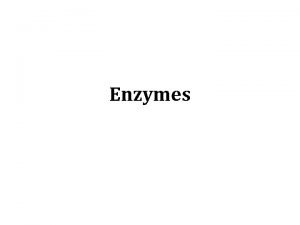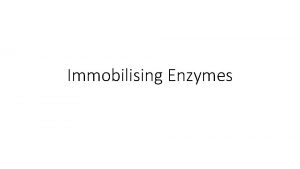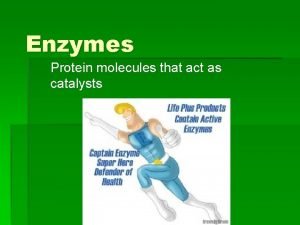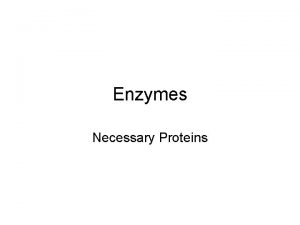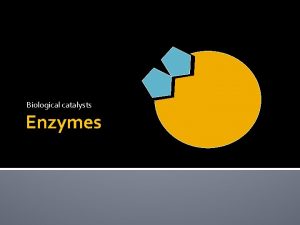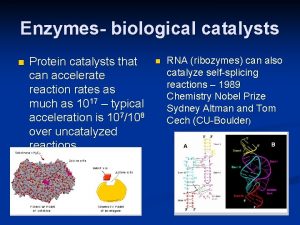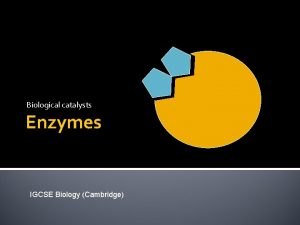Enzymes n n enzymes are catalysts agents that









- Slides: 9

Enzymes n n enzymes are catalysts (agents that speed up reactions) they are not used up in reactions, therefore can be used again and again



The key effect of an enzyme is to lower activation energy without affecting energy released

Factors that Influence Enzyme Activity 1. Temperature n human digestive enzymes are most active at normal body temperature (37 C) n approaching 40 C enzyme is altered n above 40 C enzyme action is stopped (protein is denatured) 2. p. H n some enzymes work best at neutral p. H (e. g. amylase in saliva) n some enzymes work best in acidic p. H (e. g. pepsin in stomach)

Chemical Digestion of Carbohydrates n n begins in mouth, amylase in saliva breaks down starch into maltose (disaccharide) continues in duodenum: pancreatic amylase breaks down remaining polysaccharides digestion of disaccharides occurs in jejunum with enzymes produced by cells lining the small intestine monosaccharides absorbed by villi and enter bloodstream for transport to body cells

Substrate maltose lactose sucrose Enzyme Product maltase 2 glucose lactase glucose and galactose sucrase glucose and fructose

Chemical Digestion of Proteins n n n protein digesting enzymes are first released as inactive enzymes (enzyme precursors) so that they don't digest the enzyme-secreting cells themselves enzyme precursors only become active when they reach the digestive tract in the stomach, stomach lining cells produce pepsin which breaks protein molecules into long-chain amino acids in small intestine, proteases (from the pancreas) break proteins into amino acids single amino acids are absorbed by villi

Chemical Digestion of Fats n n mechanical digestion of fats (in mouth and stomach) converts pieces of fat into smaller fat globules in duodenum, bile from liver physically digests fat globules [emulsfies them] and spreads them through the chyme in duodenum, lipase (enzyme from pancreas) chemically digests fat into glycerol and fatty acids products are absorbed by villi










